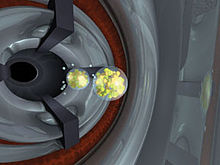మాస్కోవియం
| సాధారణ ధర్మములు | ||||||||||||||||||||||||||||||||||||||||||||||||||||||||||||||||||||||||||||||||||||||||||||||||||||||||||||||||||||||||||||||||||||||||||||||||||||||||||||||||||||||||||||||||||||||||||||||||||||||||||||||||||||||||||||||||||||||
|---|---|---|---|---|---|---|---|---|---|---|---|---|---|---|---|---|---|---|---|---|---|---|---|---|---|---|---|---|---|---|---|---|---|---|---|---|---|---|---|---|---|---|---|---|---|---|---|---|---|---|---|---|---|---|---|---|---|---|---|---|---|---|---|---|---|---|---|---|---|---|---|---|---|---|---|---|---|---|---|---|---|---|---|---|---|---|---|---|---|---|---|---|---|---|---|---|---|---|---|---|---|---|---|---|---|---|---|---|---|---|---|---|---|---|---|---|---|---|---|---|---|---|---|---|---|---|---|---|---|---|---|---|---|---|---|---|---|---|---|---|---|---|---|---|---|---|---|---|---|---|---|---|---|---|---|---|---|---|---|---|---|---|---|---|---|---|---|---|---|---|---|---|---|---|---|---|---|---|---|---|---|---|---|---|---|---|---|---|---|---|---|---|---|---|---|---|---|---|---|---|---|---|---|---|---|---|---|---|---|---|---|---|---|---|---|---|---|---|---|---|---|---|---|---|---|---|---|---|---|---|
| ప్రత్యామ్నాయ పేరు(పేర్లు) | element 115, ఎకా-బిస్మత్ | |||||||||||||||||||||||||||||||||||||||||||||||||||||||||||||||||||||||||||||||||||||||||||||||||||||||||||||||||||||||||||||||||||||||||||||||||||||||||||||||||||||||||||||||||||||||||||||||||||||||||||||||||||||||||||||||||||||
| ఆవర్తన పట్టికలో మాస్కోవియం | ||||||||||||||||||||||||||||||||||||||||||||||||||||||||||||||||||||||||||||||||||||||||||||||||||||||||||||||||||||||||||||||||||||||||||||||||||||||||||||||||||||||||||||||||||||||||||||||||||||||||||||||||||||||||||||||||||||||
| ||||||||||||||||||||||||||||||||||||||||||||||||||||||||||||||||||||||||||||||||||||||||||||||||||||||||||||||||||||||||||||||||||||||||||||||||||||||||||||||||||||||||||||||||||||||||||||||||||||||||||||||||||||||||||||||||||||||
| పరమాణు సంఖ్య (Z) | 115 | |||||||||||||||||||||||||||||||||||||||||||||||||||||||||||||||||||||||||||||||||||||||||||||||||||||||||||||||||||||||||||||||||||||||||||||||||||||||||||||||||||||||||||||||||||||||||||||||||||||||||||||||||||||||||||||||||||||
| గ్రూపు | గ్రూపు 15 (pnictogens) | |||||||||||||||||||||||||||||||||||||||||||||||||||||||||||||||||||||||||||||||||||||||||||||||||||||||||||||||||||||||||||||||||||||||||||||||||||||||||||||||||||||||||||||||||||||||||||||||||||||||||||||||||||||||||||||||||||||
| పీరియడ్ | పీరియడ్ 7 | |||||||||||||||||||||||||||||||||||||||||||||||||||||||||||||||||||||||||||||||||||||||||||||||||||||||||||||||||||||||||||||||||||||||||||||||||||||||||||||||||||||||||||||||||||||||||||||||||||||||||||||||||||||||||||||||||||||
| బ్లాక్ | p-బ్లాక్ | |||||||||||||||||||||||||||||||||||||||||||||||||||||||||||||||||||||||||||||||||||||||||||||||||||||||||||||||||||||||||||||||||||||||||||||||||||||||||||||||||||||||||||||||||||||||||||||||||||||||||||||||||||||||||||||||||||||
| ఎలక్ట్రాన్ విన్యాసం | [Rn] 5f14 6d10 7s2 7p3 (predicted)[1] | |||||||||||||||||||||||||||||||||||||||||||||||||||||||||||||||||||||||||||||||||||||||||||||||||||||||||||||||||||||||||||||||||||||||||||||||||||||||||||||||||||||||||||||||||||||||||||||||||||||||||||||||||||||||||||||||||||||
ప్రతీ కక్ష్యలో ఎలక్ట్రానులు | 2, 8, 18, 32, 32, 18, 5 (predicted) | |||||||||||||||||||||||||||||||||||||||||||||||||||||||||||||||||||||||||||||||||||||||||||||||||||||||||||||||||||||||||||||||||||||||||||||||||||||||||||||||||||||||||||||||||||||||||||||||||||||||||||||||||||||||||||||||||||||
| భౌతిక ధర్మములు | ||||||||||||||||||||||||||||||||||||||||||||||||||||||||||||||||||||||||||||||||||||||||||||||||||||||||||||||||||||||||||||||||||||||||||||||||||||||||||||||||||||||||||||||||||||||||||||||||||||||||||||||||||||||||||||||||||||||
| STP వద్ద స్థితి | solid (predicted)[1] | |||||||||||||||||||||||||||||||||||||||||||||||||||||||||||||||||||||||||||||||||||||||||||||||||||||||||||||||||||||||||||||||||||||||||||||||||||||||||||||||||||||||||||||||||||||||||||||||||||||||||||||||||||||||||||||||||||||
| ద్రవీభవన స్థానం | 670 K (400 °C, 750 °F) (predicted)[1][2] | |||||||||||||||||||||||||||||||||||||||||||||||||||||||||||||||||||||||||||||||||||||||||||||||||||||||||||||||||||||||||||||||||||||||||||||||||||||||||||||||||||||||||||||||||||||||||||||||||||||||||||||||||||||||||||||||||||||
| మరుగు స్థానం | ~1400 K (~1100 °C, ~2000 °F) (predicted)[1] | |||||||||||||||||||||||||||||||||||||||||||||||||||||||||||||||||||||||||||||||||||||||||||||||||||||||||||||||||||||||||||||||||||||||||||||||||||||||||||||||||||||||||||||||||||||||||||||||||||||||||||||||||||||||||||||||||||||
| సాంద్రత (గ.ఉ వద్ద) | 13.5 g/cm3 (predicted)[2] | |||||||||||||||||||||||||||||||||||||||||||||||||||||||||||||||||||||||||||||||||||||||||||||||||||||||||||||||||||||||||||||||||||||||||||||||||||||||||||||||||||||||||||||||||||||||||||||||||||||||||||||||||||||||||||||||||||||
| ద్రవీభవన ఉష్ణం (హీట్ ఆఫ్ ఫ్యూజన్) | 5.90–5.98 kJ/mol (extrapolated)[3] | |||||||||||||||||||||||||||||||||||||||||||||||||||||||||||||||||||||||||||||||||||||||||||||||||||||||||||||||||||||||||||||||||||||||||||||||||||||||||||||||||||||||||||||||||||||||||||||||||||||||||||||||||||||||||||||||||||||
| భాష్పీభవన ఉష్ణం (హీట్ ఆఫ్ వేపొరైజేషన్) | 138 kJ/mol (predicted)[2] | |||||||||||||||||||||||||||||||||||||||||||||||||||||||||||||||||||||||||||||||||||||||||||||||||||||||||||||||||||||||||||||||||||||||||||||||||||||||||||||||||||||||||||||||||||||||||||||||||||||||||||||||||||||||||||||||||||||
| పరమాణు ధర్మములు | ||||||||||||||||||||||||||||||||||||||||||||||||||||||||||||||||||||||||||||||||||||||||||||||||||||||||||||||||||||||||||||||||||||||||||||||||||||||||||||||||||||||||||||||||||||||||||||||||||||||||||||||||||||||||||||||||||||||
| ఆక్సీకరణ స్థితులు | 1, 3 | |||||||||||||||||||||||||||||||||||||||||||||||||||||||||||||||||||||||||||||||||||||||||||||||||||||||||||||||||||||||||||||||||||||||||||||||||||||||||||||||||||||||||||||||||||||||||||||||||||||||||||||||||||||||||||||||||||||
| అయనీకరణ శక్తులు | ||||||||||||||||||||||||||||||||||||||||||||||||||||||||||||||||||||||||||||||||||||||||||||||||||||||||||||||||||||||||||||||||||||||||||||||||||||||||||||||||||||||||||||||||||||||||||||||||||||||||||||||||||||||||||||||||||||||
| పరమాణు వ్యాసార్థం | empirical: 187 pm (predicted)[1][2] | |||||||||||||||||||||||||||||||||||||||||||||||||||||||||||||||||||||||||||||||||||||||||||||||||||||||||||||||||||||||||||||||||||||||||||||||||||||||||||||||||||||||||||||||||||||||||||||||||||||||||||||||||||||||||||||||||||||
| సమయోజనీయ వ్యాసార్థం | 156–158 pm (extrapolated)[3] | |||||||||||||||||||||||||||||||||||||||||||||||||||||||||||||||||||||||||||||||||||||||||||||||||||||||||||||||||||||||||||||||||||||||||||||||||||||||||||||||||||||||||||||||||||||||||||||||||||||||||||||||||||||||||||||||||||||
| ఇతరములు | ||||||||||||||||||||||||||||||||||||||||||||||||||||||||||||||||||||||||||||||||||||||||||||||||||||||||||||||||||||||||||||||||||||||||||||||||||||||||||||||||||||||||||||||||||||||||||||||||||||||||||||||||||||||||||||||||||||||
| CAS సంఖ్య | 54085-64-2 | |||||||||||||||||||||||||||||||||||||||||||||||||||||||||||||||||||||||||||||||||||||||||||||||||||||||||||||||||||||||||||||||||||||||||||||||||||||||||||||||||||||||||||||||||||||||||||||||||||||||||||||||||||||||||||||||||||||
| చరిత్ర | ||||||||||||||||||||||||||||||||||||||||||||||||||||||||||||||||||||||||||||||||||||||||||||||||||||||||||||||||||||||||||||||||||||||||||||||||||||||||||||||||||||||||||||||||||||||||||||||||||||||||||||||||||||||||||||||||||||||
| పేరు ఎలా వచ్చింది | IUPAC systematic element name | |||||||||||||||||||||||||||||||||||||||||||||||||||||||||||||||||||||||||||||||||||||||||||||||||||||||||||||||||||||||||||||||||||||||||||||||||||||||||||||||||||||||||||||||||||||||||||||||||||||||||||||||||||||||||||||||||||||
| ఆవిష్కరణ | Joint Institute for Nuclear Research and Lawrence Livermore National Laboratory (2003) | |||||||||||||||||||||||||||||||||||||||||||||||||||||||||||||||||||||||||||||||||||||||||||||||||||||||||||||||||||||||||||||||||||||||||||||||||||||||||||||||||||||||||||||||||||||||||||||||||||||||||||||||||||||||||||||||||||||
| మాస్కోవియం ముఖ్య ఐసోటోపులు | ||||||||||||||||||||||||||||||||||||||||||||||||||||||||||||||||||||||||||||||||||||||||||||||||||||||||||||||||||||||||||||||||||||||||||||||||||||||||||||||||||||||||||||||||||||||||||||||||||||||||||||||||||||||||||||||||||||||
| ||||||||||||||||||||||||||||||||||||||||||||||||||||||||||||||||||||||||||||||||||||||||||||||||||||||||||||||||||||||||||||||||||||||||||||||||||||||||||||||||||||||||||||||||||||||||||||||||||||||||||||||||||||||||||||||||||||||
మాస్కోవియం అనేది ఆవర్తన పట్టికలో ఒక సింథటిక్ సూపర్ హెవీ మూలకం యొక్క తాత్కాలిక పేరు. దీని యొక్క తాత్కాలిక చిహ్నం Uup, పరమాణు సంఖ్య 115 కలిగి యున్నది. ఇది ఒక చాలా రేడియోధార్మిక మూలకం ఉంది; దాని చాలా స్థిరంగా తెలిసిన ఐసోటోప్, ఉనున్పెంటియం -289, దీని సగం జీవితం కాలం 220 మిల్లీసెకన్లుగా మాత్రమే ఉంది.[5] ఇది కూడా ఎకా-బిస్మత్ అంటారు లేదా కేవలం మూలకం 115 అని అంటారు. ఉనున్పెంటియం మొదటిసారి 2003 లో అణు పరిశోధనలకు జాయింట్ ఇన్స్టిట్యూట్, డుబ్నా, రష్యా వారు రూపొందించారు. అయితే ఈ ఆవిష్కరణ ఇప్పటికీ IUPAC చే నిర్ధారణ కోసం వేచి ఉంది. ఉనున్పెంటియం సుమారు 50 అణువులు, ఇప్పటి వరకు గమనించబడింది. ఇవన్నీ 287 నుండి 290 కు మాస్ కలిగి ఉన్నట్లు చూపాయి.
ఆవిష్కరణ

కాల్షియం-48 అయాన్లను అమేరిషియం-243 పేల్చుట వలన నాలుగు అణువులు ఉనున్పెంటియం ఉత్పత్తి జరిగిందని ప్రయోగం చేసిన జట్టు వారు నివేదించారు. ఈ అణువుల క్షయంతో ఆల్ఫా కణాల యొక్క ఉద్గారం ద్వారా సుమారు 100 మిల్లీ సెకన్లలో ఉనున్ట్రియానికి మార్పు చెందుతుంది..[6][7]
- The element link does not exist. +The element link does not exist. →The element link does not exist. + 3 Error no link defined →The element link does not exist. + Error no link defined
- 243
95Am
+ 48
20Ca
→The element link does not exist. + 4 Error no symbol defined →The element link does not exist. + Error no symbol defined
మూలాలు
- ↑ 1.0 1.1 1.2 1.3 1.4 1.5 Haire, Richard G. (2006). "Transactinides and the future elements". In Morss; Edelstein, Norman M.; Fuger, Jean (eds.). The Chemistry of the Actinide and Transactinide Elements (3rd ed.). Dordrecht, The Netherlands: Springer Science+Business Media. ISBN 1-4020-3555-1.
{cite book}: CS1 maint: ref duplicates default (link) - ↑ 2.0 2.1 2.2 2.3 2.4 2.5 2.6 2.7 Fricke, Burkhard (1975). "Superheavy elements: a prediction of their chemical and physical properties". Recent Impact of Physics on Inorganic Chemistry. 21: 89–144. doi:10.1007/BFb0116498. Retrieved 4 October 2013.
- ↑ 3.0 3.1 Bonchev, Danail; Kamenska, Verginia (1981). "Predicting the Properties of the 113–120 Transactinide Elements". J. Phys. Chem. 85: 1177–1186. doi:10.1021/j150609a021. ఉల్లేఖన లోపం: చెల్లని
<ref>ట్యాగు; "B&K" అనే పేరును విభిన్న కంటెంటుతో అనేక సార్లు నిర్వచించారు - ↑ 4.0 4.1 doi:10.1103/PhysRevLett.104.142502
This citation will be automatically completed in the next few minutes. You can jump the queue or expand by hand - ↑ doi:10.1103/PhysRevLett.104.142502
This citation will be automatically completed in the next few minutes. You can jump the queue or expand by hand - ↑ Oganessian, Yu. Ts.; Utyonkoy, V. K.; Lobanov, Yu. V.; et al. (2004). "Experiments on the synthesis of element 115 in the reaction 243Am(48Ca,xn)291−x115". Physical Review C. 69 (2): 021601. Bibcode:2004PhRvC..69b1601O. doi:10.1103/PhysRevC.69.021601.
- ↑ Oganessian; et al. (2003). "Experiments on the synthesis of element 115 in the reaction 243Am(48Ca,xn)291−x115" (PDF). JINR preprints.